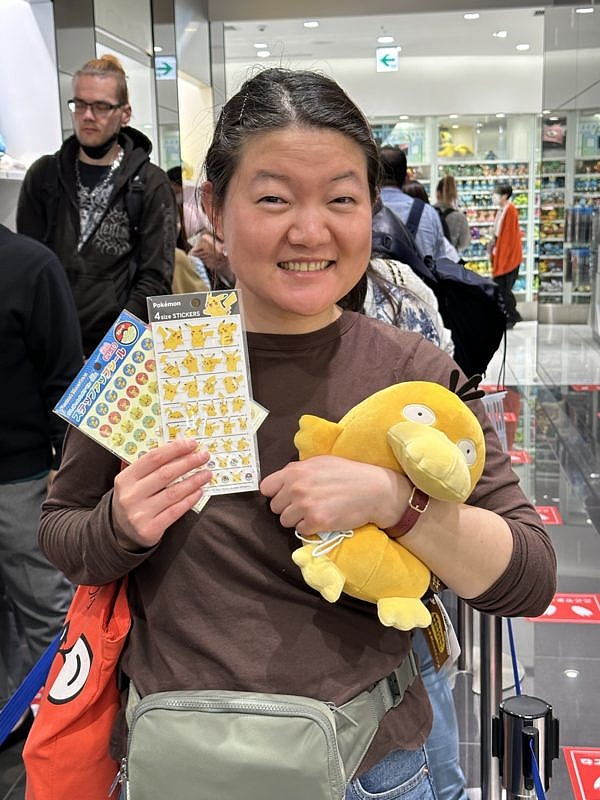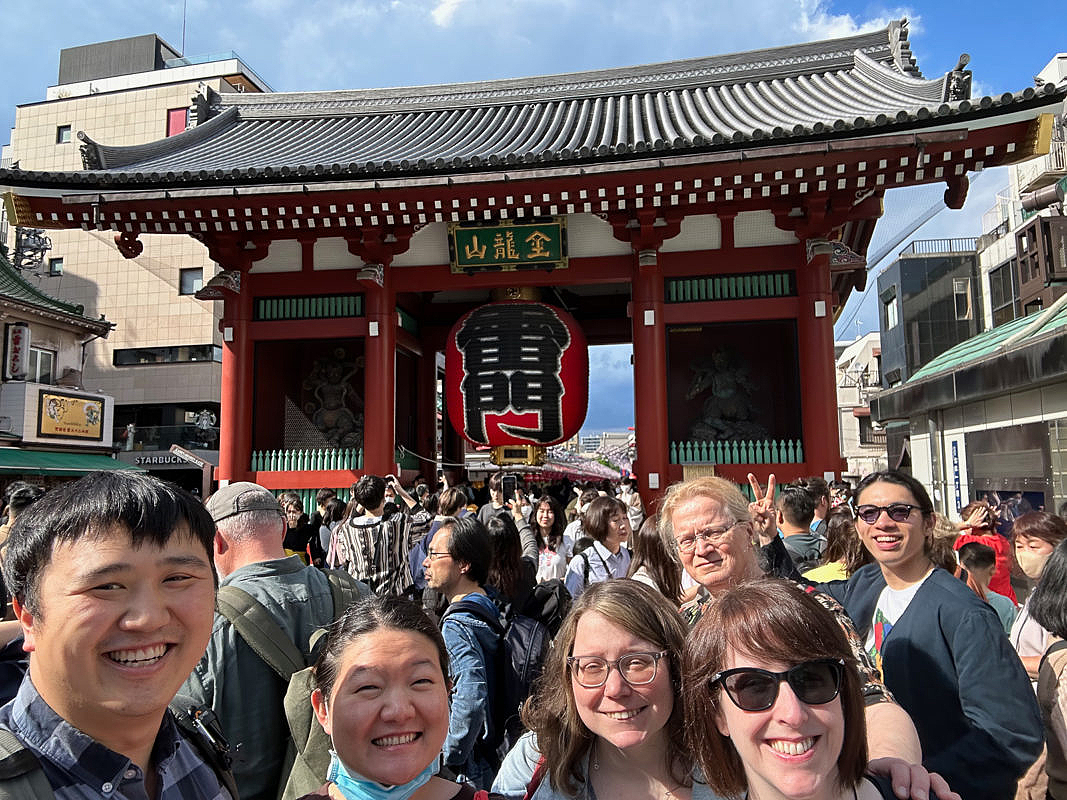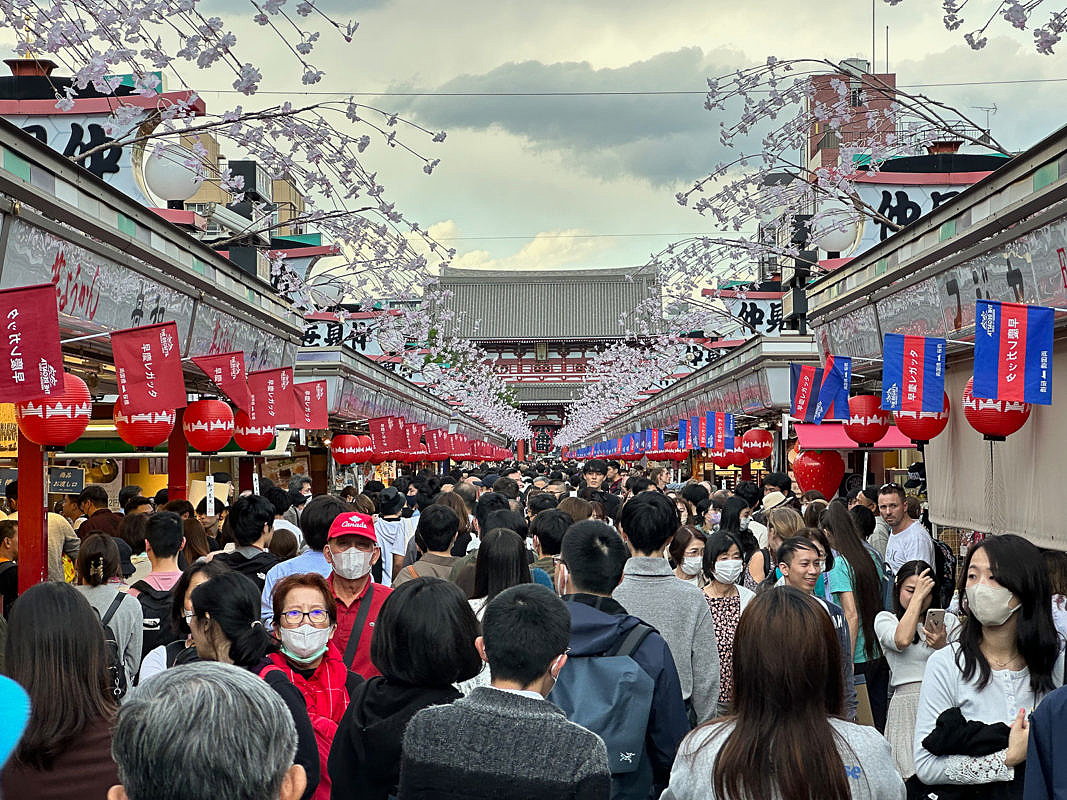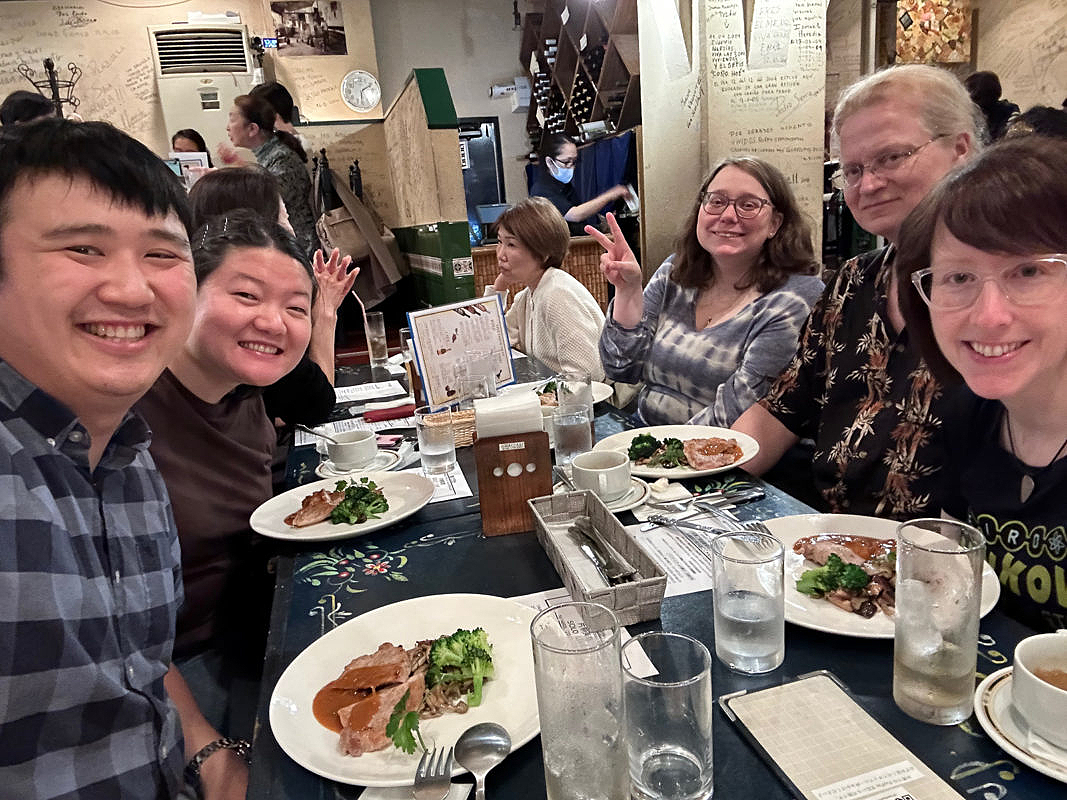Right off the bat, we knocked out something that was on Diana’s must-do list: a visit to one of Japan’s many Pokémon centers.
The Pokémon Center Tokyo DX
The one that we visited was Pokémon Center Tokyo DX. It’s located in one of Tokyo’s more ritzy malls, but it has its own dedicated entrance with a pair of elevators dedicated solely to the Pokémon Center and the Pokémon Cafe on the 5th floor.

Go one way, you’ll enter the Pokemon Cafe. It’s so popular that it’s reservation-only, and we didn’t have reservations. Go the other way, and you’ll enter the Pokemon Center store.
I played Pokemon myself… a very, very long time ago. I only played Blue, Red, and Yellow — the original games, none of the later Pokemon games or even Pokemon Go — so in my world, there was only ever 151 Pokemon. So the world of Pokemon is familiar, but so much time has passed and so many new Pokemon now exist that stepping into the Pokemon Center felt like meeting a grade school classmate 20 years after finishing elementary school.
Also, so many kids. Just tons and tons of kids, crowding all of the toys and the vending machines and the plushies.
I tried looking for some Pokemon merch for myself, but most of the Pokemon there I didn’t recognize. I was looking for Squirtle, my preferred starting Pokemon when I played Blue, but he was nowhere to be found. No Bulbasaur or Charmander either, which surprised me, though you could find each Pokemon’s penultimate evolutions.
Of course, Pikachu was very present. And some reason, everyone loves Eevees so there was lots of Eevee merch. Snorlax was well represented too.
I can only conclude that the popular and cute Pokemon were well stocked and it’s just my old ass that doesn’t know what the new hotness is.
Lily tried to find Jigglypuff, but couldn’t, though Clifairy plushies were available. Eventually, we settled on a Psyduck plushy that looks appropriately derpy and is very, very fun to squeeze. We also go some stickers, and for Yanfen, I bought a single Pokeball with a surprise Pokemon.
There were some cool historical exhibits for us older fans. There was a sound wall where you could push a button and hear the original midi music that appeared on Red and Blue.

Amy and Diana bought a lot of stuff, fitting it all into a backpack that is an exact replica of the one the trainers carry around in one of the latest Pokémon games.
We decided to have lunch at a sit down restaurant on one of the upper floors of the mall. I had a meal with battered and fried pork, and it was delicious. Much better than the pork katsu I’ve had in the US, this pork had the crispy battered exterior but kept a very moist, juicy pork center. We in the US rarely dare to cook our pork to anything other than well done.
Kaminarimon, Hōzōmon, and Sensō-ji
In the afternoon, we hit up perhaps the most popular temple in Japan.
Talk about a bustling tourist attraction! I don’t want to discount the tremendous amount of history embodied in this place, but it is currently set up the extract as many tourist dollars as it possibly can.
The first gate that greets you is Kaminarimon, or the “Thunder Gate.” It is large and impressive, with a massive lantern hanging right in the middle of the entryway. Good luck trying to get a clear picture of the gate, as the area directly in front of it is always mobbed with people.

Walk through the gate to the other side and you’re greeted with a long pedestrian road to the next gate off in the distance. On either side of the road, shops. On the road, a river of people milling about.
After taking a break at the Starbucks behind Kaminarimon, we started wading through the masses of people to get to the next gate. I was taking pictures with my film camera and somehow got separated from the rest of the group. I pressed on, taking pictures as I went, before making it to the next gate.

Hozomon, or the “Treasure House Gate,” is imposing and beautifully ornate. I snapped some pictures and waited for the rest of the group to arrive. They did arrive some time after I did, having spent a decent amount of time browsing through the shops.

We stepped through Hozomon together, entering the temple itself, called Senso-ji. There are two smaller buildings before the stairs to the main temple; these buildings hold small stands selling good luck charms and sections where you could get a fortune.
The charms are simple enough to explain: differently trinkets supposedly had the power to offer its purchaser good fortune in things like love, family, study, or work.

The fortunes are self-serve. You deposit a 100 yen coin into a box and then shake a large tin can with a small hole in it. A stick with a number falls out of the hole, and this number corresponds to the fortune slip that you pick up from a series of old fashioned filing cabinets. There are good fortunes, average fortunes, and bad fortunes — all helpfully labeled as such. If you get a bad fortune, you can tie it up at a nearby rack to release it. Diana got a good fortune, Robert got a bad one, and the rest of us got average ones.
Immediately after we got our fortunes, it started raining. (Must have been Robert’s bad fortune!) We waited out the rain shower, then walked up to the incense burner at the base of the steps, waving some incense smoke on ourselves before going up the steps of the temple.
The template is absolutely gorgeous. In front is the shrine, intricately and ornately detailed. Here, you throw some money into a box, then bow and pray for your wish. Look around and up and you will notice that even the ceiling are richly decorated with beautiful paintings.
Dinner and a Flamenco show
This was something that was on Amy’s list. She is a Flamenco dancer, and wanted to see a Flamenco show in Tokyo.
The restaurant was very cozy, with rows of tables and a very small stage set up at the front of the dining area. Inside, it was decorated to look like the interior of an old European villa. On the walls were the autographs of past dancers and musicians who had performed at the restaurant.

We were treated to a delicious multiple course dinner, and then the show began. There was a violinist and two guitarists. One guitarist, who was not Japanese but spoke perfectly fluent Japanese, was the lead guitarist and singer, singing many of the songs in Spanish.
There were two dancers, one male and one female. For the opening act, they danced together on stage. The successive acts alternated between the two of them dancing together and the male joining the band as a percussionist on some sort of wooden box.
The best act was the final set, where the Flamenco dancers abandoned their prepared dance routines and mixed things up while the band jammed behind them. They finished the evening to a standing ovation.

After the show, Amy went up to the performers to compliment them on the evening and to talk flamenco with them. Despite the language barrier, there was enough broken English, gesticulating, and showing of cell phone photos to get points across.
The Day 2 video
Here’s the video I put together for Day 2.